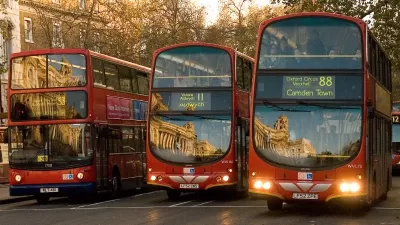BEIJING--When I first learned that I wouldn't be able to rent a car in Beijing, I was disappointed. That's how I usually break away from the business "bubble" to learn something about a city. But, it didn't take more than an hour to realize that I was better off with a local driver than tackling it myself. Driving habits, combined with roads choking with pedestrians, cars, buses, and taxis, convinced me I needed to leave the driving to a "pro".
BEIJING--When I first learned that I wouldn't be able to rent a car in Beijing, I was disappointed. That's how I usually break away from the business "bubble" to learn something about a city. But, it didn't take more than an hour to realize that I was better off with a local driver than tackling it myself. Driving habits, combined with roads choking with pedestrians, cars, buses, and taxis, convinced me I needed to leave the driving to a "pro".
Beijing is a teaming city of 16 million people, and 800,000 more arrive each year. And that's with an explicit policy of population control! Every new arrival needs a permit before he or she can relocate. The city's economy is in overdrive, not in small measure due to next year's Olympic games. All those people, all those jobs, and all that new wealth have created huge burdens for the transportation system.
Beijing's transportation system is going through many of the fits and starts of a growing economy--with wealth comes the desire to own a car. While the city has been adding lots of asphalt, its real focus is on boosting public transit. Right now, 30% of commuters use bus or rail. Almost 60% of the commuters use rail, even though the city only has three rail lines (two subway and one light rail). Another 15% drive cars. How do the others get there? Many walk, but many more use their bike.
The city expects to increase public transit's commuting share to 40% by 2010. But, based on the current mode split, this goal may be too ambitious. Most of those new public transit riders will have to come from bike riders. Car ownership is increasing quickly, not declining, despite the congestion. Walkers are still going to walk. The bus system already extends commutes to over an hour each way for most. That leaves the subway system. While new lines are being built in anticipation of the Olympic Games, I don't see much hope in convincing bicycle riders to give up their bikes for a fixed route transit system. Their bikes already give them a lot of auto-mobility, and they will be unlikely to give that up easily, particularly if their incomes put a car within reach.

Planetizen Federal Action Tracker
A weekly monitor of how Trump’s orders and actions are impacting planners and planning in America.

Map: Where Senate Republicans Want to Sell Your Public Lands
For public land advocates, the Senate Republicans’ proposal to sell millions of acres of public land in the West is “the biggest fight of their careers.”

Restaurant Patios Were a Pandemic Win — Why Were They so Hard to Keep?
Social distancing requirements and changes in travel patterns prompted cities to pilot new uses for street and sidewalk space. Then it got complicated.

Platform Pilsner: Vancouver Transit Agency Releases... a Beer?
TransLink will receive a portion of every sale of the four-pack.

Toronto Weighs Cheaper Transit, Parking Hikes for Major Events
Special event rates would take effect during large festivals, sports games and concerts to ‘discourage driving, manage congestion and free up space for transit.”

Berlin to Consider Car-Free Zone Larger Than Manhattan
The area bound by the 22-mile Ringbahn would still allow 12 uses of a private automobile per year per person, and several other exemptions.
Urban Design for Planners 1: Software Tools
This six-course series explores essential urban design concepts using open source software and equips planners with the tools they need to participate fully in the urban design process.
Planning for Universal Design
Learn the tools for implementing Universal Design in planning regulations.
Heyer Gruel & Associates PA
JM Goldson LLC
Custer County Colorado
City of Camden Redevelopment Agency
City of Astoria
Transportation Research & Education Center (TREC) at Portland State University
Camden Redevelopment Agency
City of Claremont
Municipality of Princeton (NJ)






























